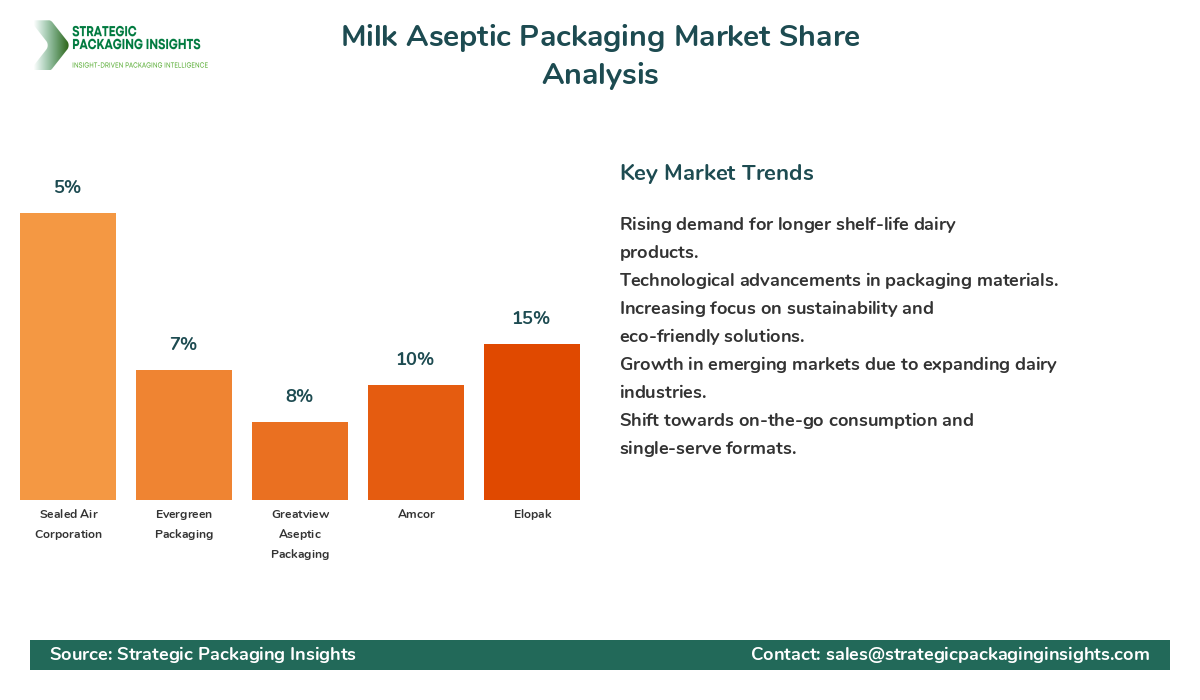- Home
- Beverage Packaging
- Milk Aseptic Packaging Market Size, Future Growth and Forecast 2033
Milk Aseptic Packaging Market Size, Future Growth and Forecast 2033
Milk Aseptic Packaging Market Segments - by Material (Plastic, Paper & Paperboard, Metal), Packaging Type (Cartons, Bottles & Cans, Bags & Pouches), Application (Dairy Products, Beverages, Pharmaceuticals, Others), and Region (Asia Pacific, North America, Latin America, Europe, and Middle East & Africa) - Market Dynamics, Growth Opportunities, Strategic Drivers, and PESTLE Outlook (2025–2033)
Milk Aseptic Packaging Market Outlook
The Milk Aseptic Packaging market was valued at $12.5 billion in 2024 and is projected to reach $21.3 billion by 2033, growing at a CAGR of 6.2% during the forecast period 2025-2033. This market is driven by the increasing demand for longer shelf-life dairy products and the growing consumer preference for convenient and safe packaging solutions. Aseptic packaging technology, which involves sterilizing the product and the packaging separately and then combining them in a sterile environment, ensures that milk and other dairy products remain fresh without the need for refrigeration. This technology is particularly appealing in regions with limited cold chain infrastructure, further propelling market growth.
Opportunities in the Milk Aseptic Packaging market are abundant, particularly with the rising trend of health-conscious consumers seeking preservative-free products. The ability of aseptic packaging to maintain the nutritional and sensory qualities of milk without the addition of preservatives is a significant advantage. Additionally, the increasing urbanization and busy lifestyles are driving the demand for ready-to-drink milk products, which are often packaged aseptically. The expansion of the dairy industry in emerging markets, coupled with technological advancements in packaging materials and machinery, presents further growth opportunities for market players.
However, the market faces certain restraints, including the high initial investment required for aseptic Packaging Equipment and the complexity of the packaging process. These factors can be a barrier for small and medium-sized enterprises looking to enter the market. Additionally, the stringent regulatory standards for aseptic packaging, which vary across regions, can pose challenges for manufacturers in terms of compliance and operational costs. Despite these challenges, the market's growth potential remains robust, driven by the increasing demand for sustainable and efficient packaging solutions.
Report Scope
| Attributes | Details |
| Report Title | Milk Aseptic Packaging Market Size, Future Growth and Forecast 2033 |
| Base Year | 2024 |
| Historic Data | 2017-2023 |
| Forecast Period | 2025-2033 |
| Number of Pages | 228 |
| Material | Plastic, Paper & Paperboard, Metal |
| Packaging Type | Cartons, Bottles & Cans, Bags & Pouches |
| Application | Dairy Products, Beverages, Pharmaceuticals, Others |
| Region | North America, Europe, Asia-Pacific, Latin America, Middle East & Africa |
| Customization Available | Yes* |
Opportunities & Threats
The Milk Aseptic Packaging market is poised for significant growth due to several key opportunities. One of the primary drivers is the increasing consumer demand for longer shelf-life products without preservatives. Aseptic packaging meets this demand by providing a sterile environment that maintains the freshness and quality of milk products. This is particularly important in regions with limited refrigeration infrastructure, where aseptic packaging can significantly reduce spoilage and waste. Additionally, the growing trend of on-the-go consumption and the rise of single-serve packaging formats are creating new avenues for market expansion.
Another opportunity lies in the technological advancements in aseptic packaging materials and machinery. Innovations such as lightweight and Recyclable Packaging materials are gaining traction, driven by the increasing focus on sustainability and environmental concerns. Companies that invest in research and development to create eco-friendly packaging solutions are likely to gain a competitive edge in the market. Furthermore, the expansion of the dairy industry in emerging markets, where there is a growing middle class with increased purchasing power, presents a lucrative opportunity for market players to expand their footprint.
Despite these opportunities, the Milk Aseptic Packaging market faces certain threats that could hinder its growth. One of the main challenges is the high cost associated with aseptic packaging technology, which can be a barrier for small and medium-sized enterprises. The complexity of the aseptic packaging process, which requires specialized equipment and expertise, can also pose operational challenges. Additionally, the market is subject to stringent regulatory standards, which vary across regions and can impact the cost and complexity of compliance for manufacturers. These factors, combined with the competitive landscape, require companies to continuously innovate and adapt to changing market dynamics.
The Milk Aseptic Packaging market is characterized by a competitive landscape with several key players holding significant market shares. The market is dominated by a few large companies that have established themselves as leaders through extensive product portfolios, strong distribution networks, and continuous innovation. These companies are focused on expanding their market presence through strategic partnerships, mergers, and acquisitions, as well as investing in research and development to enhance their product offerings.
Tetra Pak, a leading player in the aseptic packaging market, holds a substantial market share due to its extensive range of packaging solutions and strong global presence. The company is known for its innovative approach to packaging, offering sustainable and efficient solutions that cater to the evolving needs of consumers. Similarly, SIG Combibloc is another major player that has gained a competitive edge through its focus on sustainability and technological advancements in packaging materials.
Other notable companies in the market include Elopak, which is recognized for its commitment to sustainability and eco-friendly packaging solutions. The company has a strong presence in Europe and is expanding its operations in emerging markets. Amcor, another key player, is known for its diverse product portfolio and focus on innovation. The company has been actively investing in research and development to create lightweight and recyclable packaging solutions that meet the growing demand for sustainable packaging.
In addition to these major players, there are several regional and local companies that contribute to the competitive landscape of the Milk Aseptic Packaging market. These companies often focus on niche markets and offer specialized packaging solutions tailored to specific customer needs. The competitive dynamics of the market are influenced by factors such as pricing strategies, product differentiation, and customer service, which play a crucial role in determining market share and positioning.
Key Highlights Milk Aseptic Packaging Market
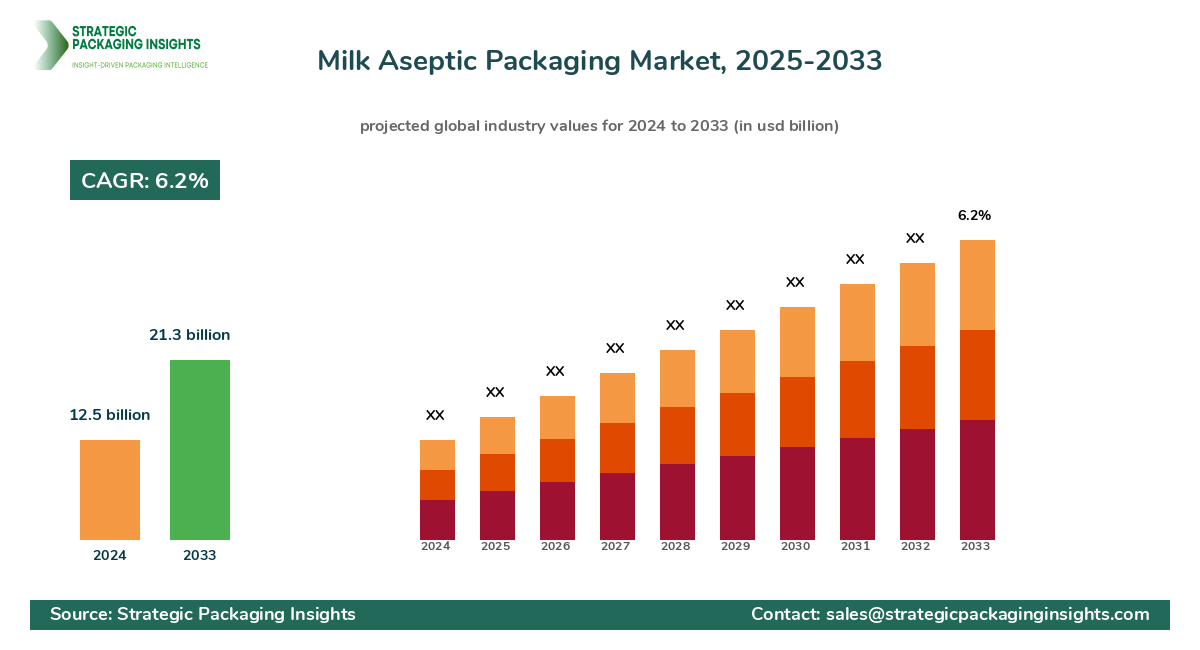
- The Milk Aseptic Packaging market is projected to grow at a CAGR of 6.2% from 2025 to 2033.
- Increasing demand for longer shelf-life dairy products is a major driver of market growth.
- Technological advancements in packaging materials and machinery are creating new opportunities.
- High initial investment and regulatory compliance are key challenges for market players.
- Emerging markets offer significant growth potential due to expanding dairy industries.
- Sustainability and eco-friendly packaging solutions are gaining traction among consumers.
- Key players are focusing on strategic partnerships and acquisitions to expand their market presence.
- On-the-go consumption and single-serve packaging formats are driving demand.
- Regional variations in regulatory standards impact market dynamics.
- Innovation and product differentiation are crucial for gaining a competitive edge.
Competitive Intelligence
The Milk Aseptic Packaging market is highly competitive, with several key players vying for market share through innovation, strategic partnerships, and geographic expansion. Tetra Pak, a leader in the market, has maintained its position through continuous innovation and a strong focus on sustainability. The company's extensive product portfolio and global reach have enabled it to cater to a diverse range of customer needs, making it a preferred choice for many dairy producers.
SIG Combibloc is another major player that has gained a competitive edge through its commitment to sustainability and technological advancements. The company has been at the forefront of developing eco-friendly packaging solutions, which have resonated well with environmentally conscious consumers. SIG Combibloc's strategic partnerships and collaborations have further strengthened its market position, allowing it to expand its footprint in emerging markets.
Elopak, known for its focus on sustainability, has carved a niche for itself in the European market. The company's emphasis on eco-friendly packaging solutions has been a key differentiator, attracting customers who prioritize environmental responsibility. Elopak's strong distribution network and customer-centric approach have contributed to its success in the competitive landscape.
Amcor, with its diverse product portfolio and focus on innovation, has been a significant player in the Milk Aseptic Packaging market. The company's investment in research and development has resulted in the creation of lightweight and recyclable packaging solutions, meeting the growing demand for sustainable packaging. Amcor's strategic acquisitions and partnerships have further bolstered its market presence, enabling it to compete effectively with other major players.
Other notable companies in the market include Greatview Aseptic Packaging, which has gained recognition for its cost-effective and high-quality packaging solutions. The company's focus on customer satisfaction and operational efficiency has helped it establish a strong foothold in the market. Similarly, Evergreen Packaging and Sealed Air Corporation have made significant contributions to the competitive landscape through their innovative packaging solutions and strong customer relationships.
Regional Market Intelligence of Milk Aseptic Packaging
The global Milk Aseptic Packaging market is segmented into several key regions, each with its own unique market dynamics and growth drivers. In North America, the market is driven by the increasing demand for convenient and ready-to-drink milk products. The region's well-established cold chain infrastructure and consumer preference for high-quality dairy products have contributed to the growth of aseptic packaging. The market in North America is expected to continue its upward trajectory, supported by technological advancements and the growing trend of on-the-go consumption.
In Europe, the Milk Aseptic Packaging market is characterized by a strong focus on sustainability and eco-friendly packaging solutions. The region's stringent regulatory standards and consumer awareness of environmental issues have driven the demand for recyclable and biodegradable packaging materials. The market in Europe is expected to grow steadily, with companies investing in research and development to create innovative and sustainable packaging solutions.
The Asia-Pacific region is poised for significant growth, driven by the expanding dairy industry and increasing urbanization. The rising middle class and changing consumer preferences for convenient and safe packaging solutions are key factors contributing to market growth. The region's limited cold chain infrastructure presents an opportunity for aseptic packaging to reduce spoilage and extend the shelf life of dairy products. The market in Asia-Pacific is expected to witness the highest growth rate, supported by government initiatives to promote the dairy industry and improve packaging standards.
In Latin America, the Milk Aseptic Packaging market is driven by the growing demand for longer shelf-life dairy products and the increasing focus on sustainability. The region's expanding dairy industry and rising consumer awareness of health and wellness are key factors contributing to market growth. The market in Latin America is expected to grow at a moderate pace, with companies focusing on product differentiation and customer service to gain a competitive edge.
The Middle East & Africa region presents unique challenges and opportunities for the Milk Aseptic Packaging market. The region's limited cold chain infrastructure and high temperatures make aseptic packaging an attractive solution for preserving the quality and freshness of dairy products. The market in the Middle East & Africa is expected to grow steadily, supported by the increasing demand for convenient and safe packaging solutions and the expansion of the dairy industry.
Top Countries Insights in Milk Aseptic Packaging
In the Milk Aseptic Packaging market, several countries stand out due to their significant market size and growth potential. In the United States, the market is driven by the increasing demand for convenient and ready-to-drink milk products. The country's well-established cold chain infrastructure and consumer preference for high-quality dairy products have contributed to the growth of aseptic packaging. The market in the United States is expected to grow at a CAGR of 5%, supported by technological advancements and the growing trend of on-the-go consumption.
In China, the Milk Aseptic Packaging market is poised for significant growth, driven by the expanding dairy industry and increasing urbanization. The rising middle class and changing consumer preferences for convenient and safe packaging solutions are key factors contributing to market growth. The market in China is expected to grow at a CAGR of 8%, supported by government initiatives to promote the dairy industry and improve packaging standards.
In Germany, the market is characterized by a strong focus on sustainability and eco-friendly packaging solutions. The country's stringent regulatory standards and consumer awareness of environmental issues have driven the demand for recyclable and biodegradable packaging materials. The market in Germany is expected to grow at a CAGR of 4%, with companies investing in research and development to create innovative and sustainable packaging solutions.
In India, the Milk Aseptic Packaging market is driven by the growing demand for longer shelf-life dairy products and the increasing focus on sustainability. The country's expanding dairy industry and rising consumer awareness of health and wellness are key factors contributing to market growth. The market in India is expected to grow at a CAGR of 7%, with companies focusing on product differentiation and customer service to gain a competitive edge.
In Brazil, the market is driven by the increasing demand for longer shelf-life dairy products and the growing focus on sustainability. The country's expanding dairy industry and rising consumer awareness of health and wellness are key factors contributing to market growth. The market in Brazil is expected to grow at a CAGR of 6%, with companies focusing on product differentiation and customer service to gain a competitive edge.
Milk Aseptic Packaging Market Segments Insights
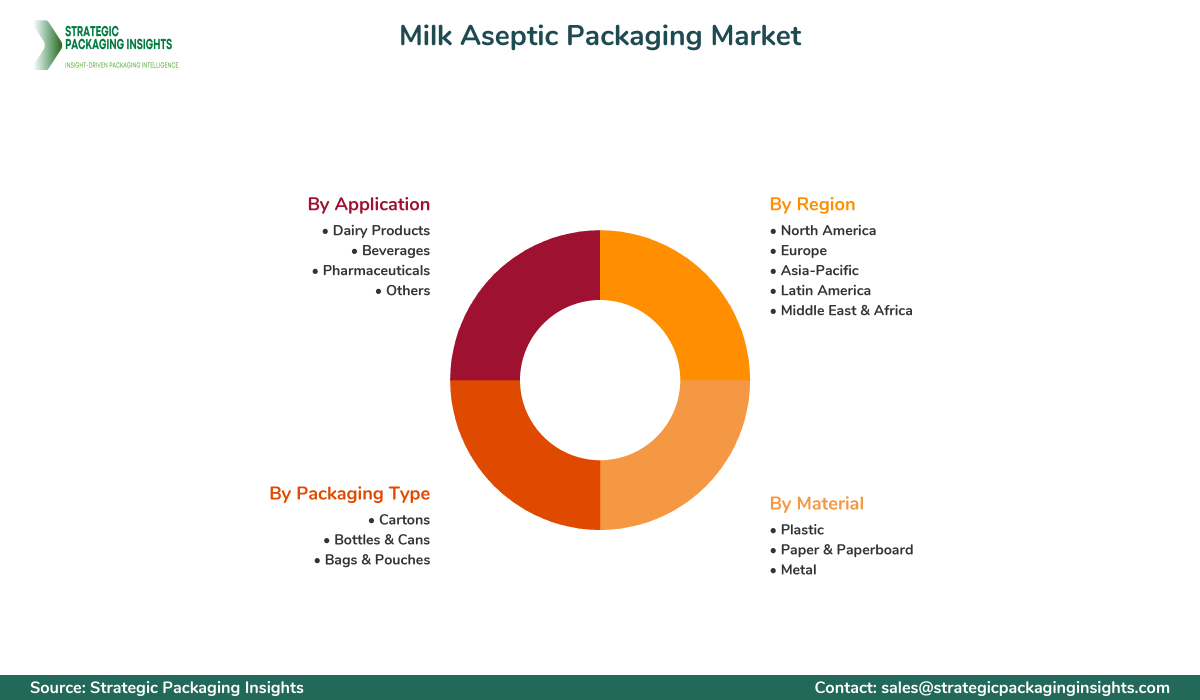
Material Analysis
The Milk Aseptic Packaging market is segmented by material into plastic, paper & paperboard, and metal. Plastic is the most widely used material due to its lightweight, durability, and cost-effectiveness. The demand for plastic aseptic packaging is driven by its versatility and ability to be molded into various shapes and sizes, making it suitable for different packaging formats. However, the increasing focus on sustainability and environmental concerns is driving the demand for paper & Paperboard Packaging, which is biodegradable and recyclable. Metal Packaging, although less common, is used for its superior barrier properties and ability to withstand high temperatures during the sterilization process.
The plastic segment is expected to maintain its dominance in the market, supported by continuous innovations in material science and the development of eco-friendly plastics. Companies are investing in research and development to create biodegradable and recyclable plastic materials that meet the growing demand for sustainable packaging solutions. The paper & paperboard segment is also expected to witness significant growth, driven by consumer preference for eco-friendly packaging and the increasing adoption of paper-based cartons for milk packaging. The metal segment, although smaller in size, is expected to grow steadily, supported by its use in niche applications where superior barrier properties are required.
Packaging Type Analysis
The Milk Aseptic Packaging market is segmented by packaging type into cartons, bottles & cans, and bags & pouches. Cartons are the most popular packaging type due to their convenience, ease of use, and ability to preserve the freshness and quality of milk products. The demand for cartons is driven by their lightweight and stackable design, which reduces transportation costs and improves storage efficiency. Bottles & cans are also widely used, particularly for single-serve and on-the-go packaging formats. The demand for bottles & cans is driven by their durability and ability to withstand rough handling during transportation and storage.
The cartons segment is expected to maintain its dominance in the market, supported by continuous innovations in design and materials. Companies are investing in research and development to create cartons with improved barrier properties and eco-friendly materials that meet the growing demand for sustainable packaging solutions. The bottles & cans segment is also expected to witness significant growth, driven by the increasing demand for single-serve and on-the-go packaging formats. The bags & pouches segment, although smaller in size, is expected to grow steadily, supported by its use in niche applications where flexibility and convenience are required.
Application Analysis
The Milk Aseptic Packaging market is segmented by application into dairy products, beverages, pharmaceuticals, and others. Dairy products are the largest application segment, driven by the increasing demand for longer shelf-life milk products and the growing consumer preference for convenient and safe packaging solutions. The demand for aseptic packaging in the dairy industry is driven by its ability to preserve the freshness and quality of milk products without the need for refrigeration. Beverages are also a significant application segment, driven by the increasing demand for ready-to-drink products and the growing trend of on-the-go consumption.
The dairy products segment is expected to maintain its dominance in the market, supported by the continuous expansion of the dairy industry and the increasing demand for longer shelf-life products. The beverages segment is also expected to witness significant growth, driven by the increasing demand for ready-to-drink products and the growing trend of on-the-go consumption. The pharmaceuticals segment, although smaller in size, is expected to grow steadily, supported by the increasing demand for sterile and safe packaging solutions for pharmaceutical products. The others segment, which includes applications such as sauces and soups, is expected to grow steadily, supported by the increasing demand for convenient and safe packaging solutions.
Region Analysis
The Milk Aseptic Packaging market is segmented by region into North America, Europe, Asia-Pacific, Latin America, and Middle East & Africa. North America is the largest market, driven by the increasing demand for convenient and ready-to-drink milk products and the region's well-established cold chain infrastructure. The market in North America is expected to continue its upward trajectory, supported by technological advancements and the growing trend of on-the-go consumption. Europe is also a significant market, characterized by a strong focus on sustainability and eco-friendly packaging solutions.
The market in Europe is expected to grow steadily, with companies investing in research and development to create innovative and sustainable packaging solutions. The Asia-Pacific region is poised for significant growth, driven by the expanding dairy industry and increasing urbanization. The market in Asia-Pacific is expected to witness the highest growth rate, supported by government initiatives to promote the dairy industry and improve packaging standards. Latin America and Middle East & Africa are also expected to grow steadily, supported by the increasing demand for longer shelf-life dairy products and the growing focus on sustainability.
Market Share Analysis
The Milk Aseptic Packaging market is characterized by a competitive landscape with several key players holding significant market shares. Tetra Pak, SIG Combibloc, and Elopak are among the leading companies in the market, known for their extensive product portfolios and strong global presence. These companies have established themselves as leaders through continuous innovation, strategic partnerships, and mergers and acquisitions. The competitive dynamics of the market are influenced by factors such as pricing strategies, product differentiation, and customer service, which play a crucial role in determining market share and positioning.
Milk Aseptic Packaging Market Segments
The Milk Aseptic Packaging market has been segmented on the basis of
Material
- Plastic
- Paper & Paperboard
- Metal
Packaging Type
- Cartons
- Bottles & Cans
- Bags & Pouches
Application
- Dairy Products
- Beverages
- Pharmaceuticals
- Others
Region
- North America
- Europe
- Asia-Pacific
- Latin America
- Middle East & Africa
Primary Interview Insights
What are the key drivers of growth in the Milk Aseptic Packaging market?
What challenges do companies face in the Milk Aseptic Packaging market?
How are companies addressing the demand for sustainable packaging solutions?
Which regions are expected to witness the highest growth in the Milk Aseptic Packaging market?
What strategies are key players adopting to gain a competitive edge in the market?
Latest Reports

The Hot Melt Glue Labeler market was valued at $1.2 billion in 2024 and is projected to reach $2.3 billion by 2033, growing at a CAGR of 6.5% during the forecast period 2025–2033.

The Ethical Label market was valued at $1.5 billion in 2024 and is projected to reach $3.2 billion by 2033, growing at a CAGR of 8.5% during the forecast period 2025–2033.

The Packaging Tensioner market was valued at $1.2 billion in 2024 and is projected to reach $2.3 billion by 2033, growing at a CAGR of 6.5% during the forecast period 2025–2033.
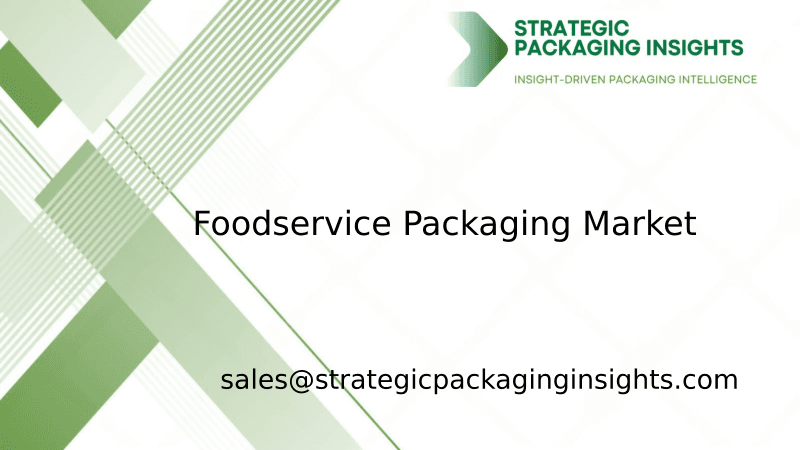
The foodservice packaging market was valued at $120 billion in 2024 and is projected to reach $180 billion by 2033, growing at a CAGR of 4.5% during the forecast period 2025–2033.

The nano-enabled packaging market was valued at $15.2 billion in 2024 and is projected to reach $35.6 billion by 2033, growing at a CAGR of 9.5% during the forecast period 2025–2033.
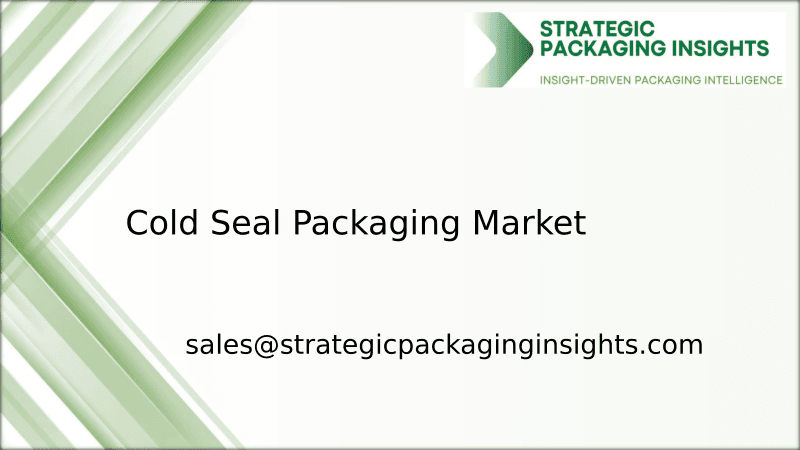
The Cold Seal Packaging market was valued at $1.5 billion in 2024 and is projected to reach $2.3 billion by 2033, growing at a CAGR of 4.8% during the forecast period 2025–2033.

The Transparent Barrier Packaging Films market was valued at $12.5 billion in 2024 and is projected to reach $20.3 billion by 2033, growing at a CAGR of 5.8% during the forecast period 2025–2033.
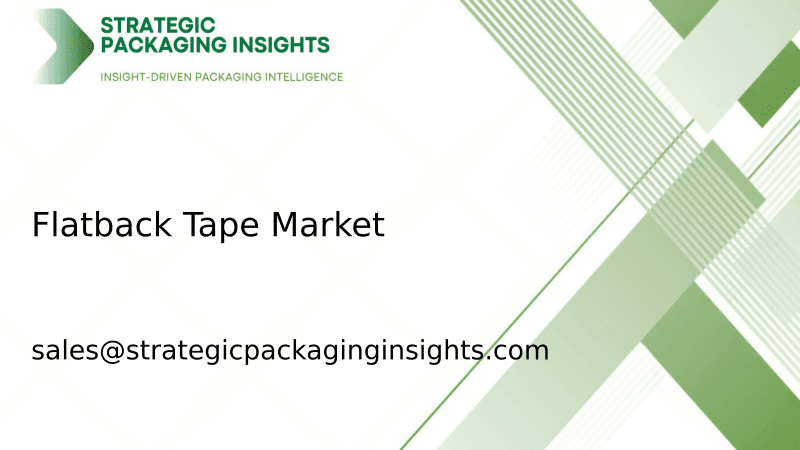
The Flatback Tape market was valued at $2.5 billion in 2024 and is projected to reach $4.1 billion by 2033, growing at a CAGR of 5.8% during the forecast period 2025–2033.
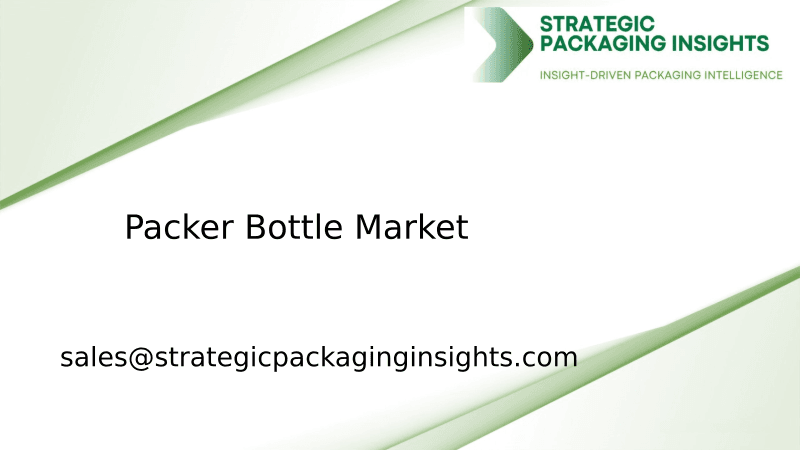
The packer bottle market was valued at $3.5 billion in 2024 and is projected to reach $5.8 billion by 2033, growing at a CAGR of 5.2% during the forecast period 2025–2033.
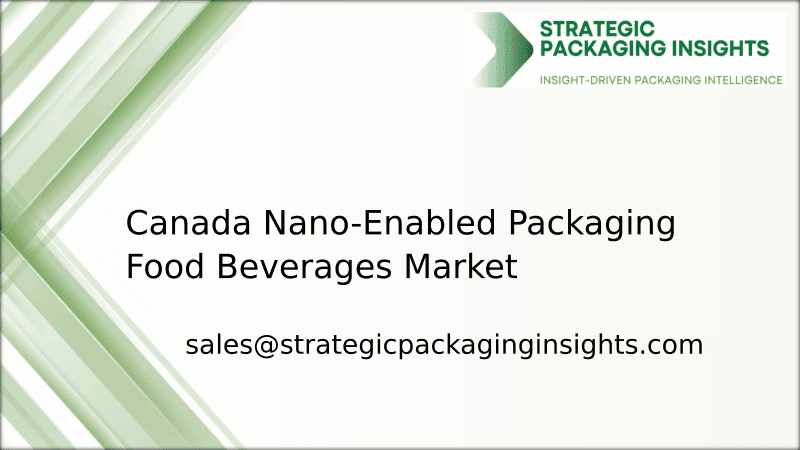
The Canada Nano-Enabled Packaging Food Beverages market was valued at $1.2 billion in 2024 and is projected to reach $3.5 billion by 2033, growing at a CAGR of 12.5% during the forecast period 2025–2033.

The India Aluminum Beverage Can market was valued at $1.2 billion in 2024 and is projected to reach $2.5 billion by 2033, growing at a CAGR of 8.5% during the forecast period 2025–2033.
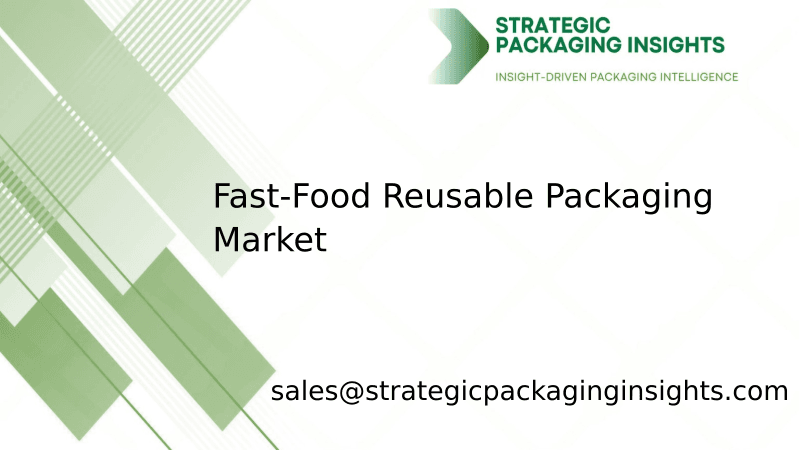
The fast-food reusable packaging market was valued at $1.2 billion in 2024 and is projected to reach $3.5 billion by 2033, growing at a CAGR of 12.5% during the forecast period 2025–2033.
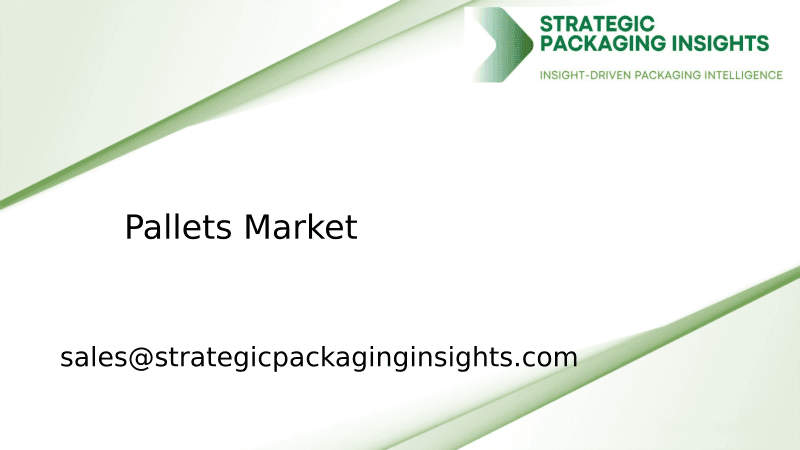
The pallets market was valued at $59.91 billion in 2024 and is projected to reach $88.69 billion by 2033, growing at a CAGR of 4.5% during the forecast period 2025–2033.

The lamination adhesives market was valued at $2.5 billion in 2024 and is projected to reach $4.1 billion by 2033, growing at a CAGR of 5.8% during the forecast period 2025–2033.

The garment packing machine market was valued at $1.2 billion in 2024 and is projected to reach $2.5 billion by 2033, growing at a CAGR of 8.5% during the forecast period 2025–2033.
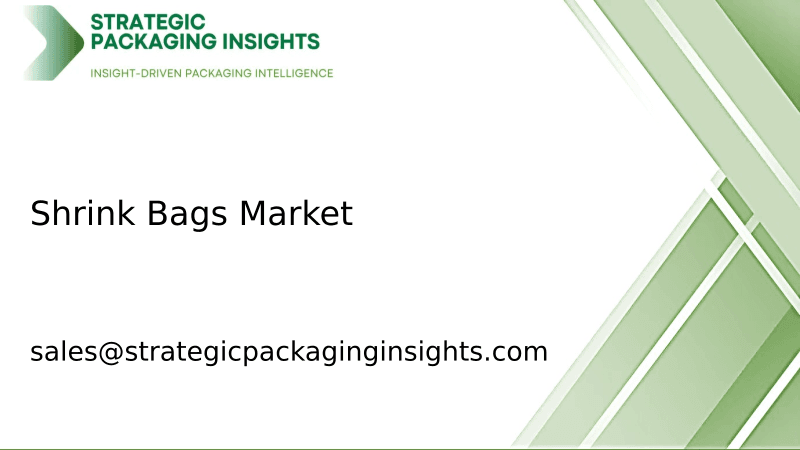
The shrink bags market was valued at $3.5 billion in 2024 and is projected to reach $5.8 billion by 2033, growing at a CAGR of 5.2% during the forecast period 2025–2033.

The beverage packaging market was valued at $128 billion in 2024 and is projected to reach $186 billion by 2033, growing at a CAGR of 4.2% during the forecast period 2025–2033.

The North America Freight and Logistics market was valued at $1,200 billion in 2024 and is projected to reach $1,800 billion by 2033, growing at a CAGR of 4.5% during the forecast period 2025–2033.

The Anti-Counterfeiting Packaging market was valued at $105 billion in 2024 and is projected to reach $182 billion by 2033, growing at a CAGR of 6.5% during the forecast period 2025–2033.

The Active and Modified Atmospheric Packaging market was valued at $15.2 billion in 2024 and is projected to reach $25.8 billion by 2033, growing at a CAGR of 6.5% during the forecast period 2025–2033.

The molded fiber packaging market was valued at $7.5 billion in 2024 and is projected to reach $12.3 billion by 2033, growing at a CAGR of 5.8% during the forecast period 2025–2033.

The micro packaging market was valued at $1.2 billion in 2024 and is projected to reach $2.5 billion by 2033, growing at a CAGR of 8.5% during the forecast period 2025–2033.

The Anti-counterfeit Pharmaceuticals Packaging market was valued at $80 billion in 2024 and is projected to reach $150 billion by 2033, growing at a CAGR of 7.5% during the forecast period 2025–2033.
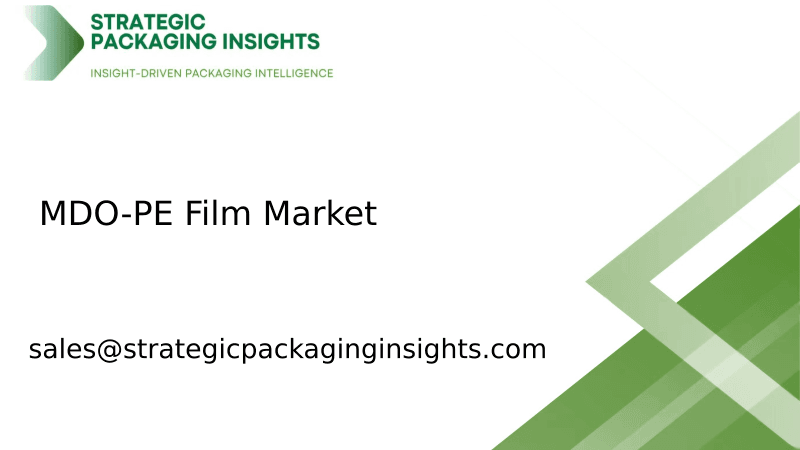
The MDO-PE Film market was valued at $3.5 billion in 2024 and is projected to reach $5.8 billion by 2033, growing at a CAGR of 5.2% during the forecast period 2025–2033.
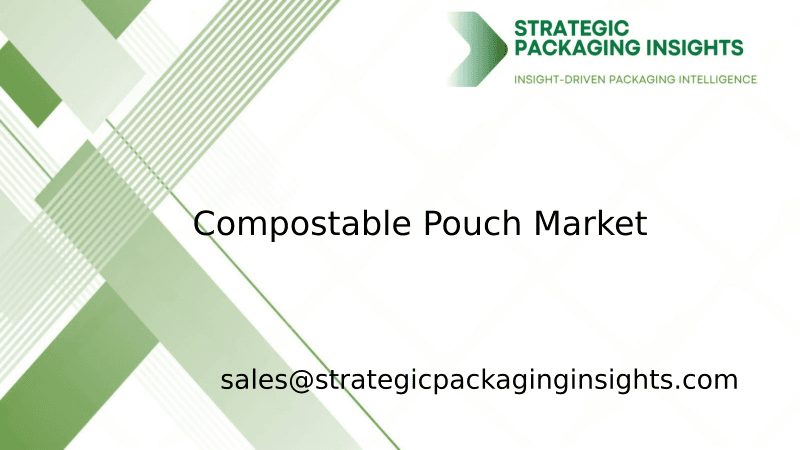
The compostable pouch market was valued at $1.2 billion in 2024 and is projected to reach $3.5 billion by 2033, growing at a CAGR of 12.5% during the forecast period 2025–2033.

The Hot Melt Glue Labeler market was valued at $1.2 billion in 2024 and is projected to reach $2.3 billion by 2033, growing at a CAGR of 6.5% during the forecast period 2025–2033.

The Ethical Label market was valued at $1.5 billion in 2024 and is projected to reach $3.2 billion by 2033, growing at a CAGR of 8.5% during the forecast period 2025–2033.

The Packaging Tensioner market was valued at $1.2 billion in 2024 and is projected to reach $2.3 billion by 2033, growing at a CAGR of 6.5% during the forecast period 2025–2033.

The foodservice packaging market was valued at $120 billion in 2024 and is projected to reach $180 billion by 2033, growing at a CAGR of 4.5% during the forecast period 2025–2033.

The nano-enabled packaging market was valued at $15.2 billion in 2024 and is projected to reach $35.6 billion by 2033, growing at a CAGR of 9.5% during the forecast period 2025–2033.

The Cold Seal Packaging market was valued at $1.5 billion in 2024 and is projected to reach $2.3 billion by 2033, growing at a CAGR of 4.8% during the forecast period 2025–2033.

The Transparent Barrier Packaging Films market was valued at $12.5 billion in 2024 and is projected to reach $20.3 billion by 2033, growing at a CAGR of 5.8% during the forecast period 2025–2033.

The Flatback Tape market was valued at $2.5 billion in 2024 and is projected to reach $4.1 billion by 2033, growing at a CAGR of 5.8% during the forecast period 2025–2033.

The packer bottle market was valued at $3.5 billion in 2024 and is projected to reach $5.8 billion by 2033, growing at a CAGR of 5.2% during the forecast period 2025–2033.

The Canada Nano-Enabled Packaging Food Beverages market was valued at $1.2 billion in 2024 and is projected to reach $3.5 billion by 2033, growing at a CAGR of 12.5% during the forecast period 2025–2033.

The India Aluminum Beverage Can market was valued at $1.2 billion in 2024 and is projected to reach $2.5 billion by 2033, growing at a CAGR of 8.5% during the forecast period 2025–2033.

The fast-food reusable packaging market was valued at $1.2 billion in 2024 and is projected to reach $3.5 billion by 2033, growing at a CAGR of 12.5% during the forecast period 2025–2033.

The pallets market was valued at $59.91 billion in 2024 and is projected to reach $88.69 billion by 2033, growing at a CAGR of 4.5% during the forecast period 2025–2033.

The lamination adhesives market was valued at $2.5 billion in 2024 and is projected to reach $4.1 billion by 2033, growing at a CAGR of 5.8% during the forecast period 2025–2033.

The garment packing machine market was valued at $1.2 billion in 2024 and is projected to reach $2.5 billion by 2033, growing at a CAGR of 8.5% during the forecast period 2025–2033.

The shrink bags market was valued at $3.5 billion in 2024 and is projected to reach $5.8 billion by 2033, growing at a CAGR of 5.2% during the forecast period 2025–2033.

The beverage packaging market was valued at $128 billion in 2024 and is projected to reach $186 billion by 2033, growing at a CAGR of 4.2% during the forecast period 2025–2033.

The North America Freight and Logistics market was valued at $1,200 billion in 2024 and is projected to reach $1,800 billion by 2033, growing at a CAGR of 4.5% during the forecast period 2025–2033.

The Anti-Counterfeiting Packaging market was valued at $105 billion in 2024 and is projected to reach $182 billion by 2033, growing at a CAGR of 6.5% during the forecast period 2025–2033.

The Active and Modified Atmospheric Packaging market was valued at $15.2 billion in 2024 and is projected to reach $25.8 billion by 2033, growing at a CAGR of 6.5% during the forecast period 2025–2033.

The molded fiber packaging market was valued at $7.5 billion in 2024 and is projected to reach $12.3 billion by 2033, growing at a CAGR of 5.8% during the forecast period 2025–2033.

The micro packaging market was valued at $1.2 billion in 2024 and is projected to reach $2.5 billion by 2033, growing at a CAGR of 8.5% during the forecast period 2025–2033.

The Anti-counterfeit Pharmaceuticals Packaging market was valued at $80 billion in 2024 and is projected to reach $150 billion by 2033, growing at a CAGR of 7.5% during the forecast period 2025–2033.

The MDO-PE Film market was valued at $3.5 billion in 2024 and is projected to reach $5.8 billion by 2033, growing at a CAGR of 5.2% during the forecast period 2025–2033.

The compostable pouch market was valued at $1.2 billion in 2024 and is projected to reach $3.5 billion by 2033, growing at a CAGR of 12.5% during the forecast period 2025–2033.
